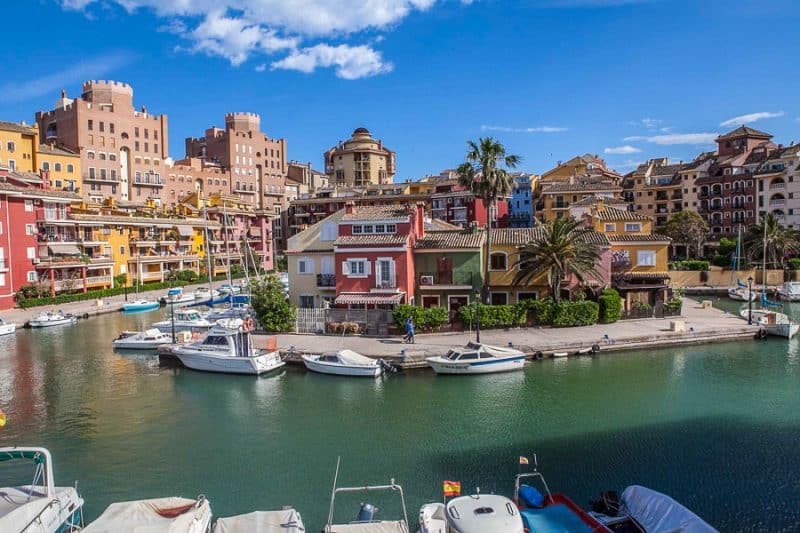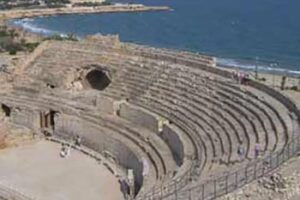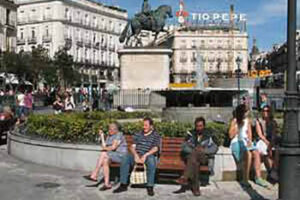
Zamora, Spain – Proving that Off the Beaten Path is The Place to Be
By Abbey Algiers
For years, I’ve heard my friend Isabel tell stories about her home in Zamora, Spain. Like most of my Spaniard friends, Isabel is extremely proud of her home and eager to share about it.
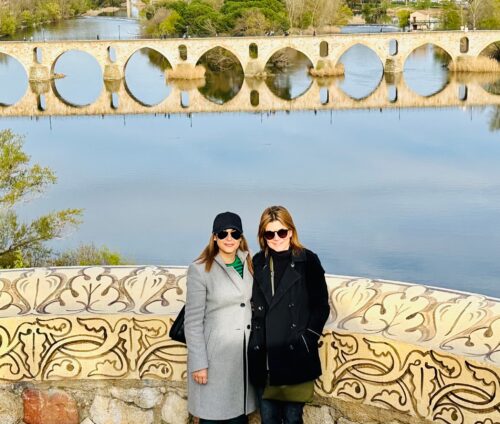
She told me about Zamora’s location along the Duero River, Romanesque art and churches, famous wine & cheeses, historic stone wall, and traditions like Semana Santa or Holy Week.
While these facts are characteristic of other Spanish cities, Isabel’s stories and passion gave Zamora a mysterious appeal.
Zamora has 60,000 Residents
Although it’s a city of over 60,000 people, Zamora sounds like a small town – with lifelong residents who all know each other and are proud of their city.
Zamora is the province’s capital city in the northwestern part of Spain. It’s near the Portuguese border, accessible from many Spanish cities, and is on the Silver Route of the Camino de Santiago.
I arrived in Zamora on Wednesday of Holy Week on one of the many trains (including the high-speed AVE) running daily from Madrid.
After checking into my hotel, Estrella, a local tour guide, gave me an introduction to the city. Isabel, her sister, and two friends joined us. As we toured, these four locals listened intently and added to the guide’s comments. This wasn’t a show; they were genuinely interested in their city and proud to show it off.
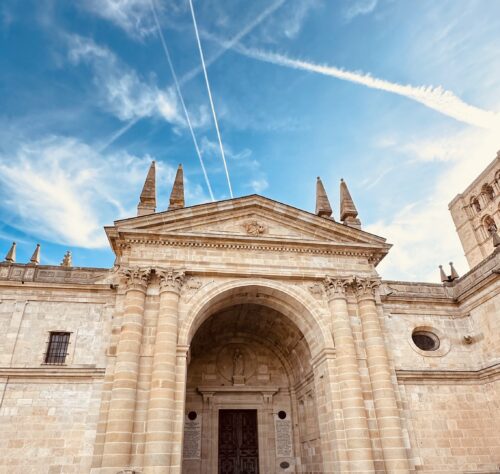
Art in Zamora.
Walking through cobblestone streets full of churches and landmarks from the 12th and 13th centuries, it became clear why Zamora is called the “Museum of Romanesque Art.” Zamora has the most Romanesque Churches worldwide per square mile – more than 24 – plus beautiful Romanesque features and art, historical landmarks, museums, and well-preserved stone walls and bridges.
The short tour allowed us to see the highlights like the 12th-century Cathedral of Zamora, the Castle of Zamora, and the Museo de Zamora.
Behind the Scenes – Understanding Semana Santa and the People of Zamora
After the tour, we returned to the Cathedral for that night’s procession, “Ofrenda de Silencio y Juramento” or “Oath of Silence.” As we made our way through the streets, there was a buzz of excitement as friends and families gathered to watch the processions. Isabel and I went inside the Cathedral before the processions and saw the “penitentes” (those participating in the processions) getting ready.
I could tell who they were because they were preparing to don the typical robes and “capirotes” – pointed hats that cover the face I’d seen in Holy Week photos. I knew these pointed hats are often interpreted as disturbing because they closely resemble those worn by the KKK, so I asked Isabel about their meaning.
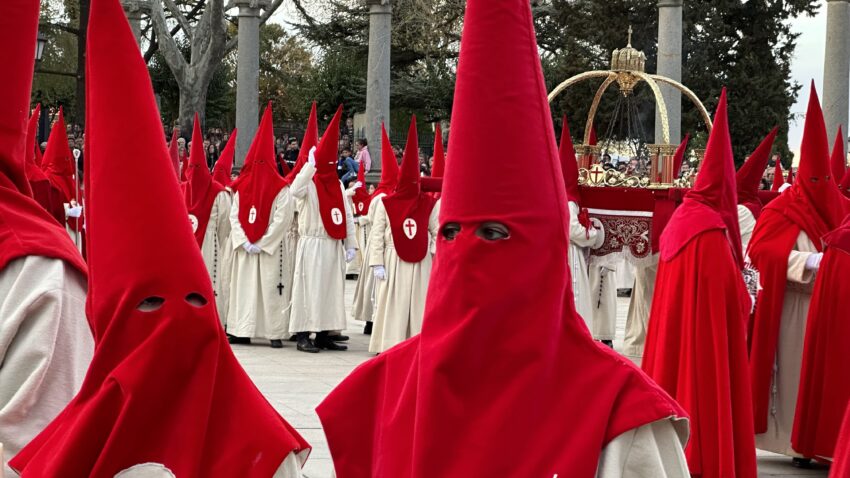
Penitents have worn capirotes for centuries to hide their faces in an act of penance. Further, the tip of the capirote is pointed upwards to symbolize a prayer/dialog between the penitent and God.
I also learned that each night’s procession features different cofradías or fraternities – sometimes exclusively men, other times mixes of men, women, and even children.
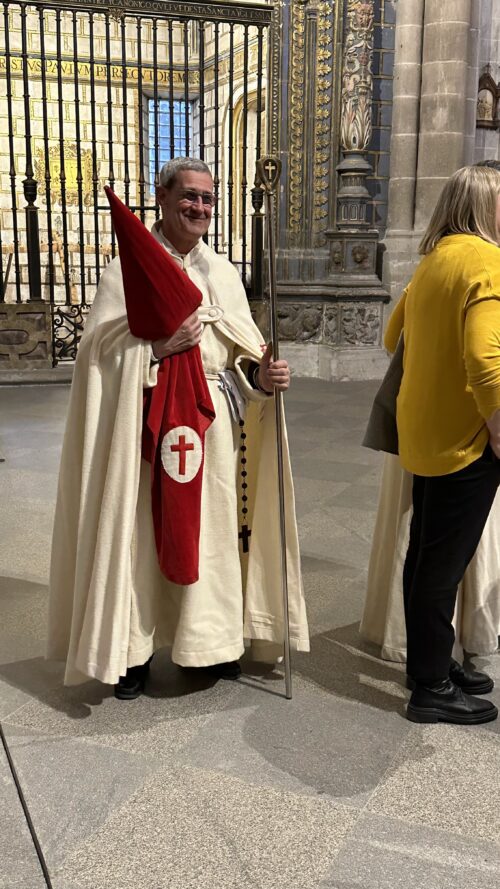
Grown adults often return to Zamora to participate in Semana Santa’s processions because participating is an honor and life event.
Zamora, Spain – The City Equivalent to the House on the Block Everyone Wants to Visit
Inside the Cathedral, it felt like “old home week,” with reunions all around me. Isabel noted that those who’ve left Zamora return during Holy Week to see family and friends.
In addition, people from all over Spain travel to Zamora for Holy Week – not necessarily for religious reasons. Many come just to watch the processions and reflect on one’s life.
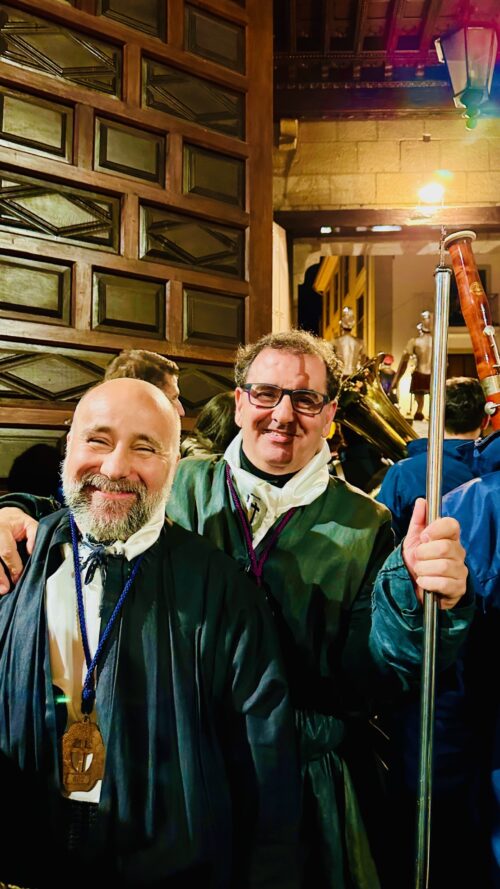 I could see why Zamora attracts so many people. The city’s vibe made me feel like I was invited to “that” friend’s house where everyone wants to go. This was due to the energy created by the procession, Zamora’s welcoming small-town appeal, and walkability.
I could see why Zamora attracts so many people. The city’s vibe made me feel like I was invited to “that” friend’s house where everyone wants to go. This was due to the energy created by the procession, Zamora’s welcoming small-town appeal, and walkability.
Zamora, The Small–Big City With Benefits for Tourists
The unfortunate reality is that Zamora is a small-big city that’s getting smaller as many leave for employment elsewhere.
This predicament was intensified by the pandemic, economy, and the 2022 wildfires that devastated over 74,000 acres outside the city, destroying much of the area’s woodland and putting its wolf population at risk. (Zamora’s Sierra de la Culebra mountain range is home to Spain’s greatest density of wolves.)
Yet despite these hardships, Zamora is working to reverse the situation and attract visitors and new residents.
Opportunity or Problem?
While Zamora’s declining population can be seen as a problem, it can also be an opportunity for visitors and new residents. My introduction to Zamora gave me faith in the latter. Zamora has a history of fighting battles and working hard.
Its people are loyal and determined. The city’s lower cost of living makes it ideal for digital nomads and retirees. Additionally, its welcoming citizens make it an attractive spot to visit.
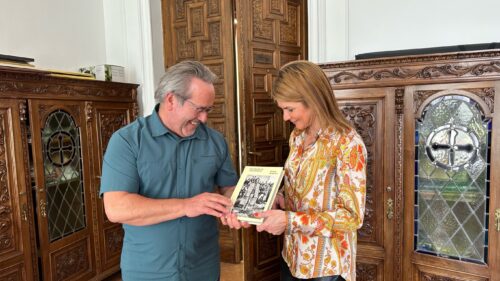
One of these warm and genuine Zamora residents is the Mayor of Zamora, and lifelong resident, Francisco Guarido Viñuela. I had the pleasure of speaking with him on Easter Monday when he recounted the successful Holy Week and shared a bit of its history, explaining that Zamora’s was the first to be recognized as an Asset of Cultural Interest.
Sr. Guarido also shared the city’s plans to fuel the economy, increase tourism, and improve residents’ lives.
Zamora – Art, Culture, and Celebrations All Year:
The mayor spoke of the art, history, culture, gastronomy, and recreation in the city and surrounding villages. He pointed out that tourism is much more economical in Zamora than in the larger cities of Spain, yet visitors can still find many activities and attractions.
In addition to Semana Santa, its churches, and art, Zamora has much to offer throughout the year:
- Urban murals on La Ruta de Murales Zamora Variopinta.
- Theaters for concerts, plays, and performances – Teatro Principal and El Ramos Carrión.
- International Beekeeper’s Festival (February), International Festival of Puppets and Marionettes (May), and International Opera Festival (July).
- Garlic Festival in Zamora (June) and the International Festival of Cheese (September 12 – 15, 2024)
- Holiday festivals and the Tour of Nativity Scenes.
In addition, Sr. Guarido talked about possibilities for the area surrounding the Duero River – boat rides, cultural events, entertainment, and the arts.
Gastronomy of Zamora
First, let’s talk tapas — the appetizers/snacks served throughout Spain. In Zamora, some tapas are called pinchos and come on a toothpick or skewer. I tried some pinchos at Bar Lobo, in the “Zona de Pinchos.”
Bar Lobo features “trozos de carne metida,” skewered grilled meat served spicy (“que pique” k-peek-ay) or not spicy (“no pique” no peek-ay). One must specify spice preference and the number of skewers when ordering. To order one spicy skewer and the other not, I’d say, “Dame uno que si, uno que no” or “Give me one spicy, one not.”
After a customer’s request, the man behind the counter screams it to the cook. It’s frenetic and insane and, of course… a must if you’re in Zamora. Knowing how to order pinchos is as important as knowing what to order.
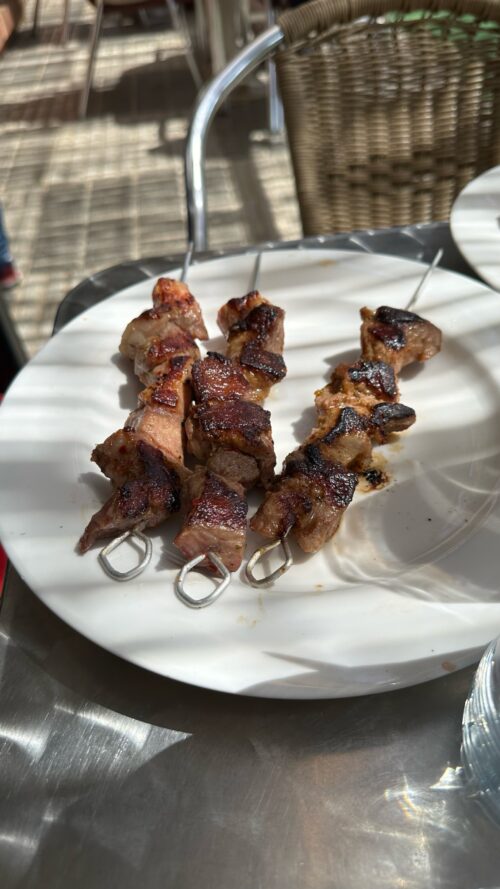
Other pinchos include “patatas bravas y mejillones en salsa zamorana un poco picante” – potatoes with a spicy red sauce and clams in Zamorana sauce.
For dining, try Zamora’s roast suckling lamb and “patatas a la importancia” – a traditional Spanish dish from Castille with potato slices fried in a batter of flour and eggs. Don’t miss the famous cheese, “Queso Zamorano,” or the “Garbanzo de Fuentesaúco,” white to cream-colored chickpeas.
Typical foods of Semana Santa include “sopa de ajo,” a garlic stew, and “Un dos y pingada” – bacon, eggs & toast. “Pipas” (shelled seeds) are a popular snack eaten during the processions and come with a little bag, “la pipelera,” to collect the shells.
Los Herreros Street is full of bars and restaurants to sample the region’s delicious wines, as Zamora is known as “the land of wine”
Zamora is known for its wine tourism and many varieties of cheese. We took an interesting and delicious day trip to the Village of Toro, where we visited the Divina Proporción Bodega, toured the Museo de Queso, and sampled perhaps the best cheese I’ve ever had at the Chillón Queseria – a family-run cheese factory that’s been around since 1890. I talked with the owners and loved their positive energy and heartwarming origin story.
Zamora has Something for Everyone
As a runner, I loved early mornings along Zamora’s Duero River. The views were breathtaking, and the trails were well cared for and populated by walkers and runners.
Zamora is easily walkable and well laid out, even for someone like me who tends to get lost. Historic sites, shopping, and eating are easily accessed on a day’s walking tour. For recreation, the province of Zamora has over 100 trails for hiking, mountain biking, climbing, or other outdoor activities.
Just a short drive from Zamora is the mountain Village of Sanabria, a Historic-Artistic Site known for its magnificent castle. Nearby find Spain’s largest glacial lake, Lago de Sanabria, where we took a solar-powered boat tour.
I was met with sincere hospitality everywhere we went, not just because I was traveling with a friend from Zamora. Spaniards love their country and welcome visitors with open arms. But there’s special hospitality found in small villages or lesser-known areas. This certainly happened in the Village of Tábara, where the mayor specially opened its Centro de Interpretación de los Beatos (Interpretation Center of the Beatitudes) on Holy Saturday so that I could see their beautiful collection.
This hospitality continued in nearby Pozuelo de Tábara as its villagers shared the history and stories of their post-Christmas tradition of “La Fiesta del Tafarrón.”
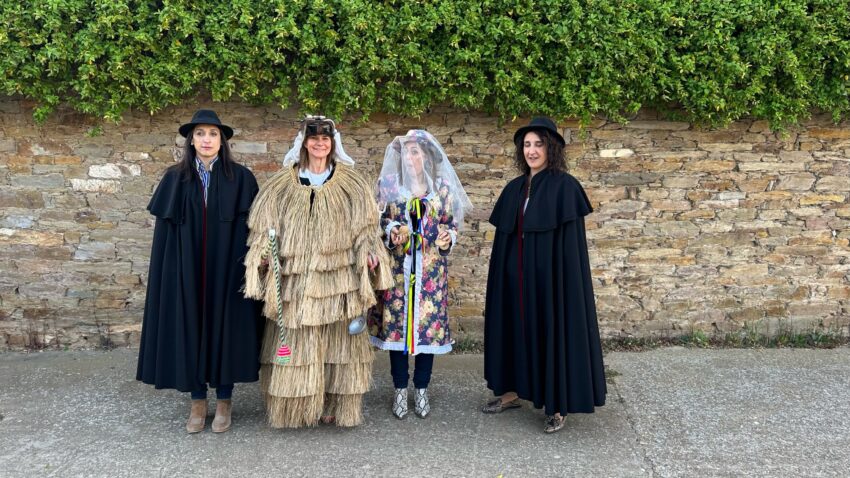
It was unforgettable and emotional as the villagers recalled personal stories of past celebrations. One older gentleman got teary-eyed when he described how his mother helped him prepare for the celebration one year.
Another woman went into great detail about the costumes and accessories she’d made. The villagers were sharing stories but also parts of their lives.
This magical moment illustrates the universal importance of traditions – such as La Fiesta del Tafarrón, Semana Santa, and the traditions of everyday life that are unique to cities and people.
These moments can only be experienced when we look for them, out of our comfort zones, and often off the beaten path. Those moments make Zamora, Spain, a spot to visit any day of the year.

Abbey Algiers is a freelance writer based in Wisconsin and has had an affinity for travel since her first trip to Spain at age nine. She writes for Youth on Course, the LPGA Women’s Golf Network, the European Traveler, and various travel publications. She enjoys hot yoga, running, and golfing with her husband Eric. The author’s trip was sponsored by the Tourist Office of Spain in Chicago in cooperation with the Castilla-León Tourist Board and City Hall of Zamora. However, the opinions are hers alone.
Read Abbey’s Top Ten Best Story of 2022 about the Winter Way in Santiago de Compostela
- Camino Tales: Wine and Memories in Galicia, Spain - July 25, 2024
- Beluga Hunting in Norway - July 20, 2024
- Costa Rica: A Rainforest Chocolate Tour - July 18, 2024



